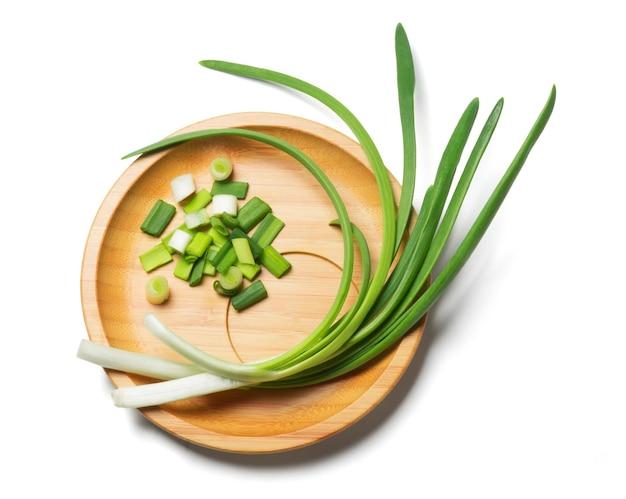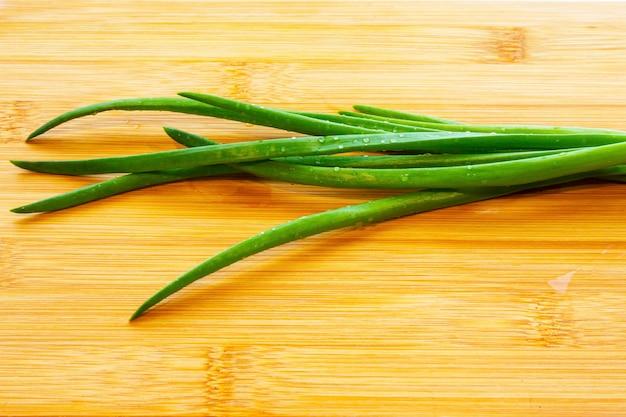Onion scapes are the curly green shoots that emerge from the tops of onion plants. These scapes not only add a unique aesthetic to your garden, but they also have culinary value. Knowing when to cut onion scapes is essential to maximize the flavors and potential of your onion crop. In this blog post, we will explore the optimal time to harvest onion scapes, as well as provide answers to commonly asked questions about growing onions. Whether you’re a seasoned gardener or a beginner, this guide will help you make the most of your onion harvest.
From understanding when to cut scapes to knowing what to plant between rows of onions, we’ll cover it all. So, if you’re eager to learn about the different stages of onion growth, the significance of scapes, and how to make the most delicious dishes with them, keep reading. By the end of this post, you’ll be well-equipped with the knowledge to become an onion-scaper extraordinaire. Let’s dive in!
When is the Right Time to Cut Onion Scapes
The Curious Case of Onion Scapes
If you’re an adventurous gardener or a keen cook, you’ve probably come across the peculiar term “onion scapes.” These whimsical tendrils can leave even the most experienced gardener scratching their head. Fear not, my curious readers, for today we shall unravel the mystery of onion scapes and determine the optimal time to cut these delightful additions to your culinary repertoire.
What Exactly are Onion Scapes
Before we delve into the timing, let’s understand what onion scapes are. Picture this: you’re strolling through your garden, admiring the lush green leaves of your onion plants, when suddenly, slender and curly stalks emerge from the center. These are none other than the infamous onion scapes.
Onion scapes are the flowering stems of the onion plant. They shoot up from the bulb, extending skywards with a graceful curve. These whimsical tendrils hold within them the potential for unique and delicious flavors, making them a favorite in the culinary world.
The Waiting Game
Now that we’re acquainted with onion scapes, the question arises: when should we cut them? The answer, my friends, lies in the delicate balance between timing and taste.
Ideally, you want to give your onion scapes some time to develop but not let them go past their prime. Patience is key. Allow the scapes to reach a length of 10-12 inches, with a tight curl at the tip. This signals that they have matured enough to be harvested and savored.
Tantalizing Timing
To strike the perfect balance, it’s crucial to keep a keen eye on your onion scapes. As the summer sun kisses your garden, observe the scapes’ progress. In most cases, you’ll find that the ideal time falls between late spring and early summer.
A word of caution: don’t dawdle too long! Once onion scapes reach their maximum length and start to straighten out, they become rather tough and fibrous. We don’t want to let them overstay their welcome when they could be fulfilling their culinary destiny.
Snip, Snip, Snip!
Now that you’ve waited patiently for the opportune moment, it’s time to bring out your trusty garden shears or scissors. Locate the spot where the scape emerges from the leaves and gently snip it off. Be careful not to damage the surrounding foliage or the bulb itself. Ah, the sweet sound of a job well done!
Beyond the Scissors
But fret not, dear friends, for our journey doesn’t end with the snip of the scissors. Once you’ve successfully harvested your onion scapes, a world of culinary possibilities awaits!
Slice them up and add them to your stir-fries for a delightful crunch. Infuse them into oils or vinegars for a unique flavor punch. Blend them into soups or stews for a hint of oniony goodness. The options are as diverse as your taste buds allow.
The Magic of Onion Scapes Unveiled
In a world where onions hide their secrets beneath the soil, the emergence of scapes is a magical event. Their graceful form and tantalizing taste offer a wonderous culinary experience. So, my dear readers, the next time you find yourself admiring your onion plants and the enchanting scapes that adorn them, remember this guide. Embrace the timing, take up your shears, and venture forth into a world of flavors waiting to be discovered. Happy harvesting!
Keywords: onion scapes harvest time, when to cut onion scapes, harvesting onion scapes, onion scapes culinary possibilities, growing and harvesting scapes, best time to cut onion scapes, how to harvest onion scapes
FAQ: Onion Scapes – When to Cut
Now that you’ve got your hands on some delicious onion scapes, it’s time to learn all about them. From planting to harvesting, we’ve got you covered with the most frequently asked questions about onion scapes.
What should you plant between rows of onions
When it comes to growing onions, it’s important to make the most of your garden space. To maximize productivity, plant something that won’t compete with your onions for nutrients, such as lettuce or spinach. These leafy greens are known as “intercropping” companions and can be planted between rows of onions.
How do you know when your onions are ready to harvest
Harvesting onions can be a bit of an art. But don’t worry, we’ve got a few tricks up our sleeves to help you determine when your onions are ready. The tops of the onions should start to turn yellow and flop over. Once they do, it’s time to gently lift them from the soil. Allow them to dry out in a well-ventilated area for a few days before storing them.
Do you harvest shallots before they flower
Yes, indeed! Shallots, just like onions, should be harvested before they have a chance to flower. If you wait for them to bloom, their energy will be focused on producing seeds rather than developing that delicious bulb. So, resist the temptation to let them flower and make sure to harvest them in their prime!
What can you not plant with onions
While onions can get along with most plants, there are a few companions they prefer to keep their distance from. For instance, beans and peas do not make good bedfellows with onions as they can inhibit their growth. Onions also don’t play well with other bulbous plants, like garlic or shallots, because they might compete for space and resources.
How do you know when your onions are ready to pick
Now, this is a question that stumps many gardeners! To know when your onions are ready to be plucked from the ground, take a closer look at their necks. When the necks weaken and start to collapse, it’s a good sign that your onions are ripe for picking. Trust your instincts and give them a gentle tug. If they resist, leave them be for a little longer.
Should you cut shallot scapes
Ah, the eternal question of shallot scapes! While some gardeners prefer to leave them untouched, cutting shallot scapes can be a wise choice. By removing the scapes, you allow the plant to focus its energy on bulb development rather than flowering. Plus, you get the bonus of enjoying some tasty scapes in your cooking!
How long does it take for onions to grow from bulbs
Growing onions requires a bit of patience, my friend. From the time you plant the bulbs, it typically takes around 90 to 120 days for them to reach maturity. But hey, good things come to those who wait, and the reward of homegrown onions is simply delightful!
Where do you cut onion scapes
When it’s time to snip those onion scapes, make sure you cut them just above the point where they emerge from the onion plant. This way, you promote healthy plant growth and avoid injuring the main stem. It’s like giving your onions a stylish haircut to keep them looking sharp!
When should scapes be cut
Timing is everything when it comes to cutting scapes. It is generally recommended to cut them while they are still young and tender. As soon as the scapes curl and make a graceful loop, it’s time to bring out the shears. Don’t worry, you won’t hurt their feelings – they’ll grow back stronger than ever!
Should I cut off onion scapes
Absolutely! Cutting off onion scapes is not only beneficial for the plant but also for your culinary adventures. By snipping off the scapes, you redirect the plant’s energy towards growing bigger bulbs. Plus, you can turn those scapes into a flavorful addition to your favorite dishes. It’s a win-win situation!
Can you eat onion scapes raw
You bet! Onion scapes are incredibly versatile and can be enjoyed in various ways. They have a mild, sweet flavor with a hint of oniony goodness. Whether you decide to eat them raw in salads, pickle them, or throw them in a stir-fry, scapes are sure to add a delightful twist to your culinary creations.
Should I let my onions flower
While onion flowers can be quite beautiful, it’s generally recommended to prevent your onions from blooming. When onions go to seed and produce flowers, it diverts energy away from bulb development, resulting in smaller and potentially less flavorful onions. So, pinch those buds and keep your onions focused!
What can you do with shallot tops
Shallot tops are not to be underestimated! Those vibrant green shoots can be used in various ways to infuse your dishes with delightful flavor. Chop them up and add them to omelets, soups, or sprinkle them over roasted vegetables. Don’t let those tops go to waste – they have plenty to offer!
Can onion scapes be eaten
Absolutely! Onion scapes are not only edible but also delicious. With their delicate texture and unique flavor, they can elevate any dish to the next level. So, don’t be shy – get creative in the kitchen and explore the wonders of onion scapes.
Can you plant onions in the same place every year
While onions can be quite forgiving, it’s not recommended to plant them in the same spot year after year. Doing so can increase the risk of diseases and pests building up in the soil. To keep your onions healthy and happy, it’s best to rotate their planting location every year. Give them a change of scenery, and they’ll thank you with bountiful bulbs!
How long after cutting scapes do you harvest garlic
Ah, the delicate dance of timing garlic harvest! Once you’ve cut the scapes from your garlic plants, it’s usually best to wait a couple of weeks before harvesting the bulbs. This gives the garlic a chance to focus its energy on bulb development. So, be patient and savor the anticipation of those aromatic cloves.
Can you grow onions in the same place every year
As tempting as it may be to stick to your favorite onion growing spot, it’s generally not recommended to grow them in the same place year after year. This practice can deplete the soil of vital nutrients, making it challenging for your onions to thrive. Give them a change of soil and watch them flourish!
Can you cut onion tops while growing
While you may have seen your neighbor taking scissors to their onion tops, it’s best to leave yours intact while they’re still growing. The green tops play a crucial role in photosynthesis and help fuel bulb development. Once the tops start to yellow and wither naturally, it’s an indication that your onions are ready for harvest.
With these FAQs on onion scapes, you’re ready to become a master onion grower! Happy planting, harvesting, and enjoying the bountiful flavors that onion scapes bring to your table. Stay tuned for more gardening tips and tricks!

